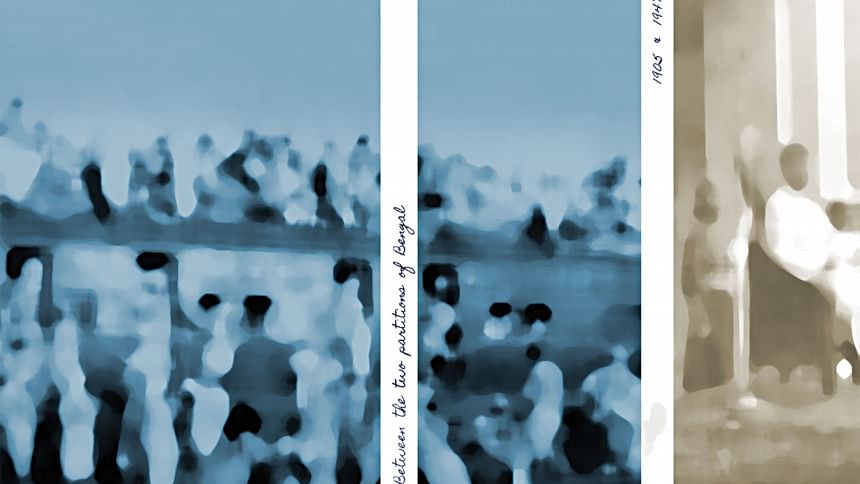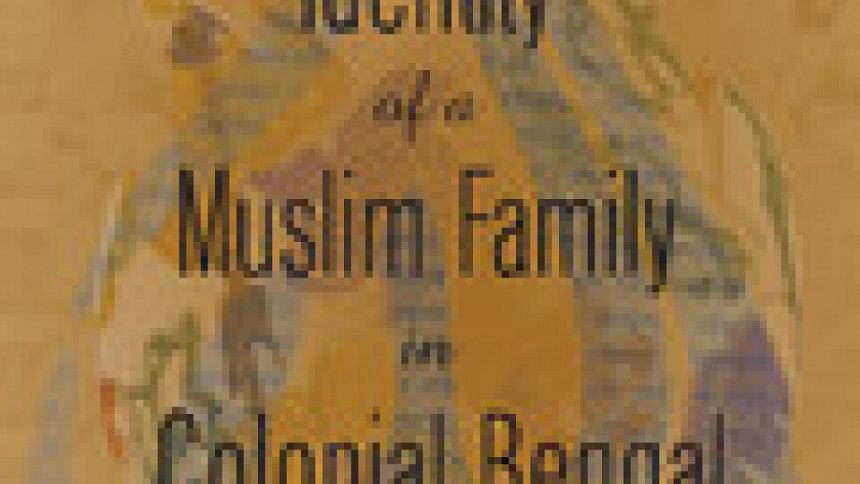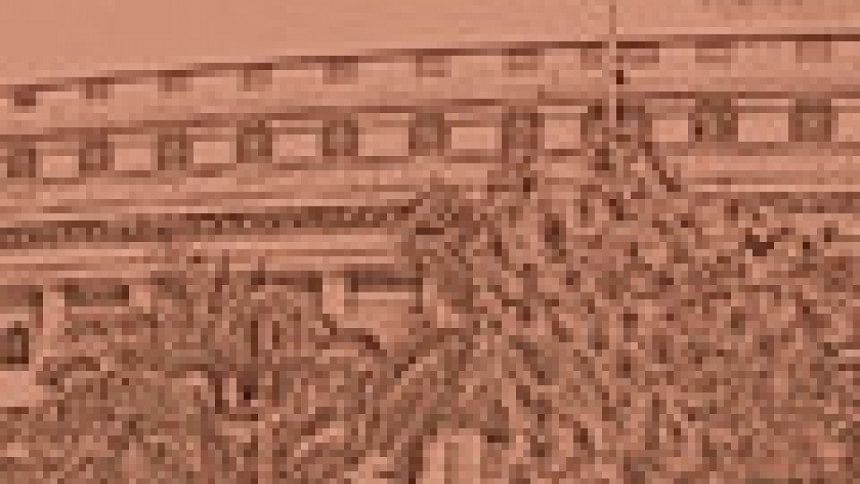Between the two partitions of Bengal

The revolt in India may have collapsed in 1857, but a new colonial imagination dawned in its wake. Periodic legislative reforms stretched from 1861—a typically British drip by drip response to the rising political tide in India. However, right through the pre-1909 era, Muslims suffered from underrepresentation at the central and provincial legislatures. Between 1893 and 1903, Muslim members made up only 12 percent of the Indian legislative council, whereas 23 percent of the country's total population were then Muslims. Worse was the Muslim presence in Bengal's law-making body—while nearly 52 percent of Bengal's inhabitants were Muslims, their representation in the Bengal Legislative Council was equivalent to 5.7 percent of the legislators.
In my book, Identity of a Muslim Family in Colonial Bengal: Between Memories and History (Peter Lang, 2021), I focus on this era of pre-Partition Bengal, trekking through old family recollections, oral anecdotes, memoirs, and other available books and documents on pre-independence India, and blend them with the larger history of British Bengal. Working on my earlier book, The Central Legislature in British India, 1921-47: Parliamentary Experiences under the Raj (Peter Lang, 2019) had taken me back to the undivided subcontinent's history, which I had researched as a PhD student in England in the early 1960s. Over the years, I reassessed aspects of my old findings and added fresh resonance to the narrative. The recently released Identity of a Muslim Family is largely built around parallel memories and Muslim identity imaginations in colonial Bengal, wracked as it was by religious, social, and political turmoil between its 1905 and 1947 divisions. It explores, therefore, the real-life experience of Bengal between the two World Wars, and even more importantly, this trajectory aims at Bangladesh's collective amnesia about its inheritances from the yore.

Muslim enfranchisement augmented with the 1909 Morley-Minto Reforms, which endorsed a separate electorate for Muslims, a measure that turned into a thorn between the Hindus and Muslims in British India. This expansion of the electorate and an array of decentralisation further increased Muslim authority in the Muslim-majority provinces.
Their legislative prominence in united Bengal—inherited from the contentious separate electorate (1909)—developed further when the post-1937 provincial autonomy unfolded dramatically. Trailblazing Muslim leaders like AK Fazlul Huq from Bengal and a few pioneers from Punjab were assertive, from time to time; they dared to challenge MA Jinnah, who was then at the top of all-India Muslim politics. Most Muslim members of the central and provincial legislatures did not hesitate to vent their constituents' existential grievances. Details about these leaders' wrangling with Jinnah, who was then trying to consolidate the Muslim League in Bengal and Punjab, can be found unveiled in Maulana AK Azad's India Wins Freedom (South Asia Books, 1978) and later Ayesha Jalal's The Sole Spokesman: Jinnah, the Muslim League, and the Demand for Pakistan (Cambridge University Press, 1985).

In the 1920s and '30s, however, Jinnah usually avoided communal postures. He was less than excited about aggressive politics. He bargained more for the larger Muslim community in India, not for any specific province. Jalal's groundbreaking book, The Sole Spokesman, is a vindication of what I read earlier through the legislative debates.
Jinnah was also on good personal terms with Motilal Nehru, the Swarajist Congress leader—a credible posture in the volatile interplay of cooperation and non-cooperation in most British Indian legislatures. For my research in 1963, I had interviewed Lord M Hailey, once a powerful member of the Viceroy's Executive Council; he remembered that Jinnah was amongst the most outstanding parliamentarians in the central legislature. Until Sir A Rahim became the President (Speaker) of the Indian Legislative Assembly (1935-45), there were no outstanding Bengali Muslim leaders in the Indian Legislature except Fazlul Huq's stint there (1934-36). Strikingly, the most able amongst the Hindu and Muslim politicians preferred to stay in Bengal politics and apparently balked at the all-Indian legislature in New Delhi. This history, which I recount in both of my latest volumes, entail a tormenting relevance to our contemporary times as India's surging Hindutva recaps old Hindu-Muslim acrimony.
By the time the concept of Pakistan as an independent Muslim state seriously hit the South Asian consciousness in the 1940s, Muslim politicians were at the cusp of two seismic prospects—they could either have an independent India under the Congress Party leadership, in a likely coalition with the Muslim League and other parties, or a partitioned India with Pakistan as a separate Muslim state, which would divide both Bengal and Punjab. But there was indeed a last minute, now in oblivion, alternative to the division of Bengal floated by an alliance of Sarat Bose, Abul Hashem, HS Suhrawardy, and Kiran Sankar Roy, well-known actors of Bengal politics.
Two recent commentaries by Shyamali Ghosh and Sana Aiyar wondered if Fazlul Huq's controversial coalition (1940-43) with Shyama Prashad Mukherjee of the Hindu Mahasabha was a shaky venture for an undivided Bengal through a Hindu-Muslim power sharing. My father remembered that even some of the ardent supporters of Huq did not like that unnerving collaboration. One of the key reasons of such negativity was the Hindu Mahasabha's deep unpopularity with Bengali Muslims.
Nonetheless, Fazlul Huq's Krishak Proja Party's (KPP) main electoral hold was in the Muslim majority districts in East Bengal—he was politically and personally more active in Dhaka than in Kolkata since the 1905 Bengal division. And he was married to a scion of a khandani family in Dhaka. He was proud of his Muslim heritage and he made no secrets about it; visiting ancestral burial grounds of the Muslim constituents was among his campaign postures, my father mentioned.
Why, then, did Huq's "alternative of 1940-43" not gain political traction? How did the Bose-Hashem-Suhrawardy-Roy backed "third way" for united Bengal collapse?
In his autobiography, Nirad C Chaudhuri did not hide his discontent for the British-introduced parliamentary institutions that had challenged the Hindu bhadralok's eminence in Bengal. The same sentiments were echoed in writer, activist, and politician Abul Mansur Ahmed's memoir Amar Dekha Rajnitir Panchash Bochhor (Prothoma, 1968). Jalal's The Sole Spokesman also adds original information on the closing days of undivided Bengal while claiming that Jinnah finally accepted the 1947 Partition when negotiations for the anticipated post-independence federal and provincial configurations had disappointingly collapsed. Meanwhile, while Taj ul-Islam Hashmi weaved the rural subalterns, mostly peasant Muslims, in Pakistan as Peasant Utopia: The Communalization of Class Politics in East Bengal, 1920-47 (Routledge, 1992), recording their voices with their not-so-hidden emotions, Joya Chatterji's Bengal Divided: Hindu Communalism and Partition 1932-1947 (Cambridge University Press, 1994) spurned the popular view that Muslims carried the exclusive burden for the 1947 Partition of Bengal. It skillfully bared the Hindu intelligentsia's panic at the Bose-Hashem-Suhrawardy-Roy's rush to save Bengal from its impending split—to them, an undivided Bengal, with a Muslim majority would have been a "Pakistan by another name".
In my book, Identity of a Muslim Family in Colonial Bengal, I compare a part of her findings with what my father, the late M Badruzzaman, an inquisitive schoolteacher and essayist with predilections for history and Sufism, periodically alleged—that most well-known Bengali writers did not tolerably project Muslim experiences in their genre. He regretted that Muslims were the shadowy "others" in most notable works of fiction. Such "literary disenfranchisement" also spurred Bengali Muslims towards identity politics.
Several autobiographies from the 1920s also confirmed how both Hindus and Muslims tended to help their own kind more often. Influential zamindar-politicians like Nawab Salimullah, Nawab Ali Chaudhuri, and Nawab Shamsul Huda had earlier helped numerous Muslim young men with jobs and encouraged education among Muslims. Fazlul Huq also looked after Muslim educational interests, and individually, helped countless young men and women gain employment. So, while the Muslims usually approached the Nawabs or senior Muslim politicians and officials for government jobs, Hindus usually contacted their Hindu patrons for such favours.
Not long ago, I came across Asok Mitra's extraordinary newspaper article "Marooned in their Myths—if the partition of 1905 were allowed to stand", published in Kolkata's The Telegraph in June 2005. There, Mitra reprimands the "cult of patriotic fervor" that had risen against the 1905 split that defined "the Hindu Bengali psyche" for over a century. While political rumors made their rounds among the villagers in those days, one morning, a visitor told my grandfather about the 1905 Bengal split that made Dhaka the capital of the new province. Then, according to family anecdotes, my grandfather excitedly told the visiting friend, "It's good news for our children—they will get jobs when they finish school!"
While my father was a Dhaka College student (1915-19), Muslims were yet to recuperate from their despair over the 1905 Partition's annulment in 1911. The creation of the Muslim League in 1906 was a reaction to the Congress Party's uncompromising rejection of the partition—it was a "blow" to the boosting East Bengali Muslim aspirations over the new province. Nostalgic questions still yearn to find out why Bengal was divided in 1905—was it for genuine administrative reasons for the Raj, or for "divide and rule"? Above all, who were the losers and winners of that exploding episode of Bengal history?
What my research into such grassroots vibrations, legislative scholarship, and recollections from colonial Bengal have revealed is that Muslim politics in British India and pre-partition Bengal had multiple layers—religion was not its exclusive raison d'etre.
M Rashiduzzaman, PhD is Professor Emeritus in Political Science at Rowan University, New Jersey, USA and author of several books, scholarly essays and articles on British India, Bangladesh, and Pakistan.

 For all latest news, follow The Daily Star's Google News channel.
For all latest news, follow The Daily Star's Google News channel. 



Comments